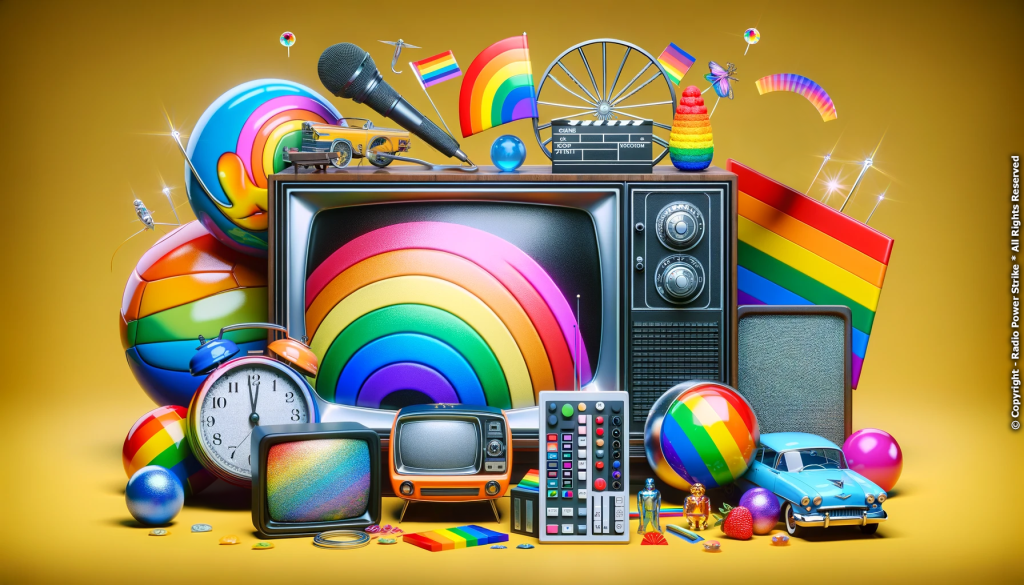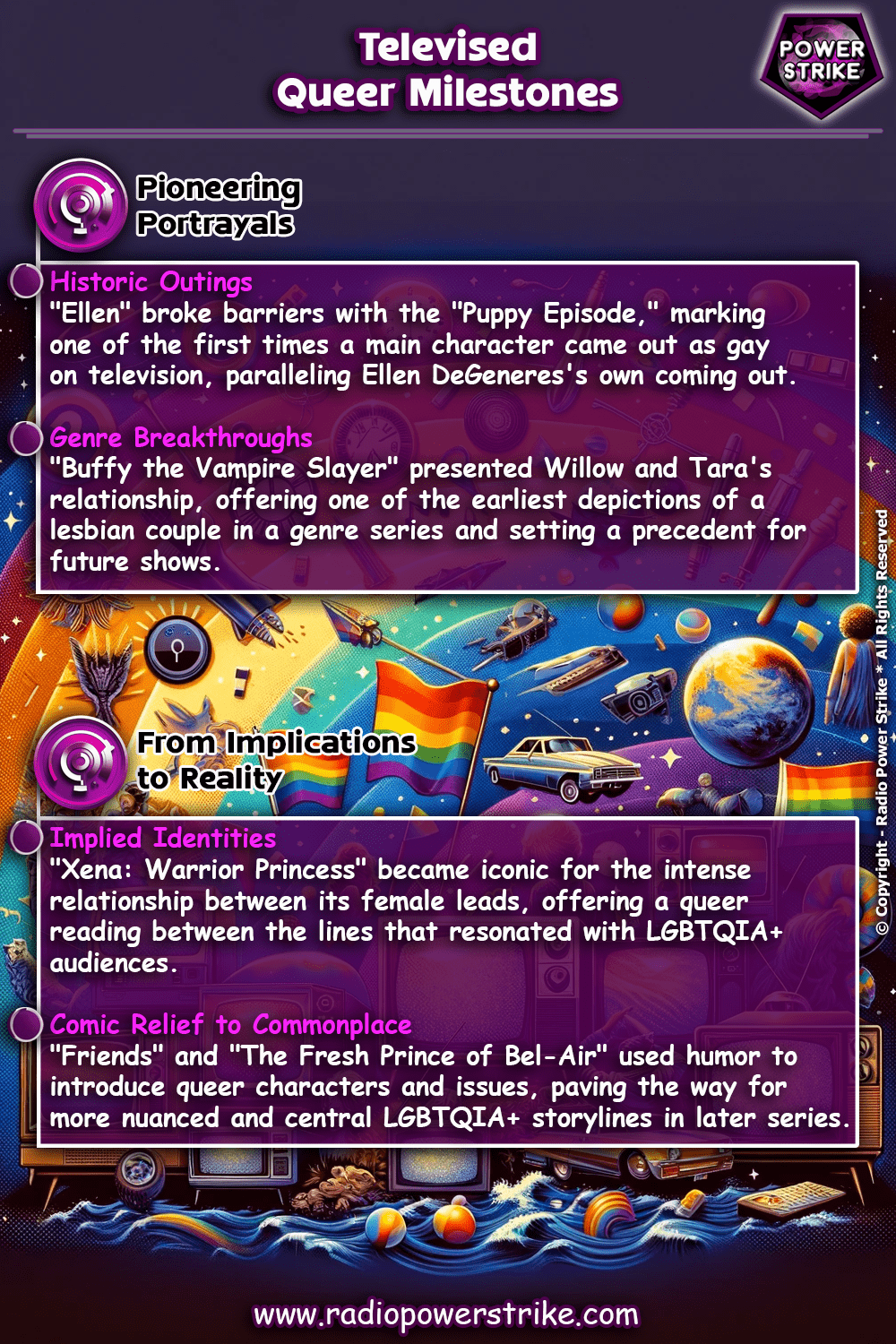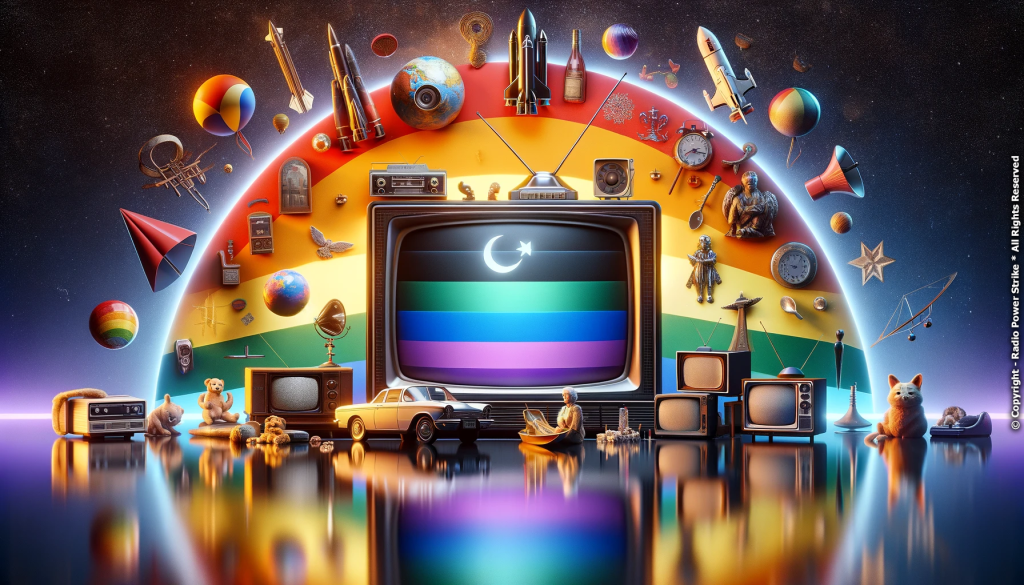Celebrating Queer Moments in Nostalgic TV Series
Revisiting Landmark LGBTQIA+ Milestones on the Small Screen

Television has been a constant companion, mirroring societal changes and shaping our perceptions. As the world evolved, so did TV, gradually introducing queer moments that would become milestones. These nostalgic moments, sometimes subtle and sometimes groundbreaking, contributed significantly to the conversation about LGBTQIA+ representation. Through this lens, we’ll explore the iconic queer instances in TV series that have etched themselves into our collective memory.
Groundbreakers: Early Depictions of Queerness on TV
In an era where LGBTQIA+ representation was minimal, some series took bold steps, providing glimpses of queer lives that many had never seen on mainstream TV.
“Ellen,” in the 90s, made television history with its “Puppy Episode”, where Ellen Morgan (played by Ellen DeGeneres) comes out as gay. This revelation was monumental, not just for the character, but for DeGeneres herself.
“Buffy the Vampire Slayer” offered another groundbreaking moment with the tender relationship between Willow and Tara, celebrating lesbian love in a genre series, a rarity for its time.
Similarly, “Will & Grace” provided mainstream audiences with consistent queer representation, positioning its gay characters front and center without apology.
Subtle Nods: Reading Between the Lines
Before explicit representation became more common, many shows hinted at queerness, embedding subtle nods for those in the know.
The classic series “Xena: Warrior Princess” had a legendary bond between Xena and Gabrielle. While their relationship was never overtly labeled, the undertones were evident, making them icons in the queer community.
“Friends,” one of the most popular sitcoms of the 90s, introduced Ross’s ex-wife Carol, who had left him for a woman. Their nuanced dynamics and Carol’s subsequent life shed light on lesbian realities amidst comedic plots.
In “The Fresh Prince of Bel-Air,” the character Will often teased his cousin Carlton about his effeminate traits, a subtle acknowledgment of the broader spectrum of masculinity.

Evolving Narratives: Modern Takes on Classic Shows
As the world moved towards acceptance, classic shows began to revisit and reshape their queer narratives, reflecting a more inclusive mindset.
Doctor Who,” a series that began in the 60s, introduced Captain Jack Harkness in the 2000s, a pansexual time traveler, indicating the series’ adaptability to changing times.
Similarly, the reboot of “Charmed” showcased Mel, one of the main witches, as a proud lesbian, integrating her sexuality as an essential part of her character arc.
Shows like “The Twilight Zone” in its modern iteration and “Black Mirror” have also woven LGBTQIA+ themes seamlessly, challenging norms and setting new benchmarks for representation.
As we stroll down the memory lane of television history, it’s evident that the medium has been both a mirror and a catalyst. By reflecting society’s evolving views on LGBTQIA+ identities, TV series have played a part in normalizing queer narratives, sparking essential conversations, and influencing perceptions. Celebrating these queer moments isn’t just about nostalgia; it’s a testament to the power of representation and the promise of a more inclusive future.


Comments are closed, but trackbacks and pingbacks are open.